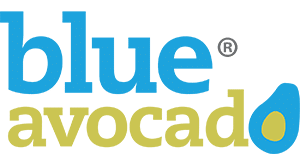2020 California Employment Law Update #2: Compensation
California’s new rules and regulations impact compensation for employees and contractors — find out how in this 2nd part of our series on CA employment law.

How will the new compensation laws affect your nonprofit?
In 2020, California has new rules, regulations, and court rulings that have changed the employment law landscape. In this four-part series, we bring you key new laws for 2020. Our second update is on compensation.
Minimum Wage
Effective January 1, 2020, California employers with at least 26 employees must pay minimum wage at the rate of $13.00 per hour. For employers with 25 or fewer employees, minimum wage will increase to $12.00 per hour.
Employers are generally subject to federal, state, and local minimum wage laws and must follow the stricter standard; that is, the one that is the most beneficial to the employee.
Exempt Employees
The minimum salary that must be paid to exempt employees in California corresponds to the state minimum wage. Exempt employees must earn at least twice the state’s minimum wage for full-time employment, e.g. $54,080 annually for employers with 26+ employees. For employers with 25 or fewer employees, the amount is $49,920. This minimum salary increases as minimum wage increases. As always, the “duties” tests must be satisfied for any employee classified as exempt.
Overtime for the Computer Software Professional Exemption
As of January 1, 2020, the computer software employees’ minimum hourly rate of pay exemption increases to $46.55 per hour. (The minimum monthly is $8080.71; annual is $96,968.33). The applicability of this exemption requires careful analysis to see if the worker is performing the necessary duties. Note that this exemption is only from overtime. Exempt Computer Software Professionals must still be afforded the opportunity to take meal and rest breaks.
Independent Contractors
California’s AB 5 is getting a lot of news coverage—and rightfully so. If you have anyone performing services for you that isn’t paid as a W2 employee, careful review of that relationship is a must. Companies must confirm that an independent contractor is really an independent contractor or suffer the consequences.
In many important ways, AB5 is “just” a codification of the California Supreme Court’s 2018 Dynamex
“A-B-C test.” Under the test, a worker is an employee unless:
- she is free from the control and direction of the hirer in performance of the work; and
- she performs work that is outside the usual course of the hiring entity’s business; an
- she is customarily engaged in an independently established trade, occupation, or business of the same nature as the work performed for the hiring
One big expansion under AB5 is that Dynamex applied to the Wage Orders of the California Industrial Welfare Commission, while AB5 applies more broadly to the California Labor Code and Unemployment Insurance Code definitions of an “employee.” As before, we do not recommend trying to parse this too liberally when reviewing your work relationships. We strongly recommend that you analyze all persons who perform work for your business to see where they fit under the laws.
In the event the “ABC” test cannot be applied to a particular work relationship, AB5 clarifies that the determination of independent contractor status is governed by a prior California Supreme Court ruling (S.G. Borello & Sons, Inc. v. Department of Industrial Relations). Many employers are familiar with this review as it is a “ten factor” test (also called the “economic realities” test) with the most significant factor being the control of the business over the worker.
The law also specifies certain jobs as exempt from the “ABC” test—but the Borello test must still be met! These include licensed insurance agents, certain licensed health care professionals, certain practicing licensed professions (attorneys, architects, engineers, private investigators and accountants), registered securities broker-dealers or investment advisors, direct salespersons and construction subcontractors.
Other “professional services” may fit in an exemption if they have a business license and negotiate their own rates of pay, including:
- Travel agents
- Graphic designers
- Certain human resources and marketing professionals
- Certain photographers
- Freelance writers
- And licensed barbers and cosmetologists
Real estate licensees are subject to provisions of the Business & Professions Code instead of the “ABC” test. And there are new rules for business-to-business situations and “referral agencies” that connect clients with service providers who provide graphic design, photography, event planning, minor home repairs, moving, home cleaning, errands, and dog walking, among others.
Of note, employers may not reclassify an individual who was an employee on January 1, 2019 to an independent contractor because of these exemptions! But, the bill’s exemptions do apply retroactively if a worker fits under one of the exemptions.
The full 2020 California Employment Law Update series:
- Arbitration in the Workplace
- Compensation
- Fair Employment
- Time off
About the Author
Jeanine DeBackerof McPharlin Sprinkles & Thomas LLP represents employers throughout Northern California when employees sue for harassment, wrongful termination, discrimination and not getting paid correctly. She also advises clients on how to avoid getting sued in the first place. Jeanine conducts trainings for employees on harassment prevention and maintaining a respectful workplace. Finally, Jeanine is a neutral workplace investigator.
Articles on Blue Avocado do not provide legal representation or legal advice and should not be used as a substitute for advice or legal counsel. Blue Avocado provides space for the nonprofit sector to express new ideas. Views represented in Blue Avocado do not necessarily express the opinion of the publication or its publisher.











